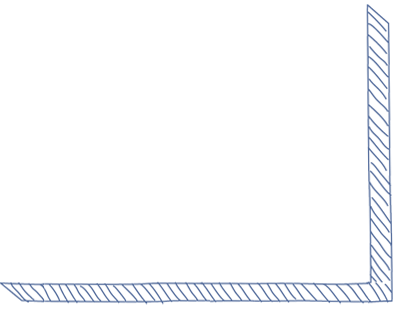



Sheryl Roehl
McDonald Observatory Davis Mountains
N 30 68.084', W 103 01.502';
Elevation 6602.3’ (at HET)
Content:
We can study anything by using our senses which are sight, touch, hearing, taste, and smell. Most astronomical objects are so far away that the only thing we can do to study them is look at the light they emit.
All objects that have a nonzero temperature will emit light. Light is actually an electromagnetic wave (EM). We classify different EM waves by their wavelengths (frequencies).


The light from an object can be can be spread out into its component colors and recorded. The recording device is called a spectrometer. The spectrum for Mercury will look like this:

The bright colored lines are called emission lines.
Each element has its own set of energy levels and so is capable of absorbing/emitting light of colors that is different from all other elements. A spectrum is like a fingerprint, it is unique to a particular element. From viewing an object’s spectrum you can determine its chemical composition. It is also possible to determine the object’s temperature and density.
Spectroscopy is the measurement of the response of matter as it interacts with light and its many uses extend beyond space science, to weather monitoring, medical diagnostics such as MRI, household conveniences like the microwave oven and countless other facets of everyday life.
A telescope is a combination of lenses and/or mirrors used to collect a large amount of light and bring it to a focus. The McDonald Observatory is equipped with a wide-range of state of the art instrumentation (4 telescopes that use mirrors) for imaging and spectroscopy in the optical and infrared. The size of the telescope determines how much light it can gather, therefore, the light gathering power of the telescope is determined by the area of the primary mirror.


Reflection:
Spectroscope








Mark then changed the light source to a smaller fluorescent bulb with black tape on it so that the light was emitted through a thin narrow vertical strip. We looked at the light source through our tubes and saw two distinct yellow lines.


The lines are the unique signature of mercury gas. The bright colored lines are called emission lines. Each element has its own set of energy levels and so is capable of absorbing/emitting light of colors that is different from all other elements.


Telescopes
Our initial investigation started with exploring the properties of mirrors and reflection. We used a laser to shine a beam of light on a mirror and looked at the angle the reflected laser beam followed.


We traced the light path and measured the angles and found that the angle of incidence and the angle of reflection were the same. Mark dusted baby powder over the laser beams and we observed it in the dark.


We then simulated the curvature for the HET (Hobby-Eberly Telescope) by forming a semicircle (taped on the floor) with each of us holding a mirror (on the semicircle) and trying to make each of our mirrors reflect onto the same target. This proved very difficult and as a result we then had a discussion about the curvature of the individual hexagonal mirrors of the HET and how this curvature enables the light to be reflected to a focal point.


Sunday, June 4, 2006












